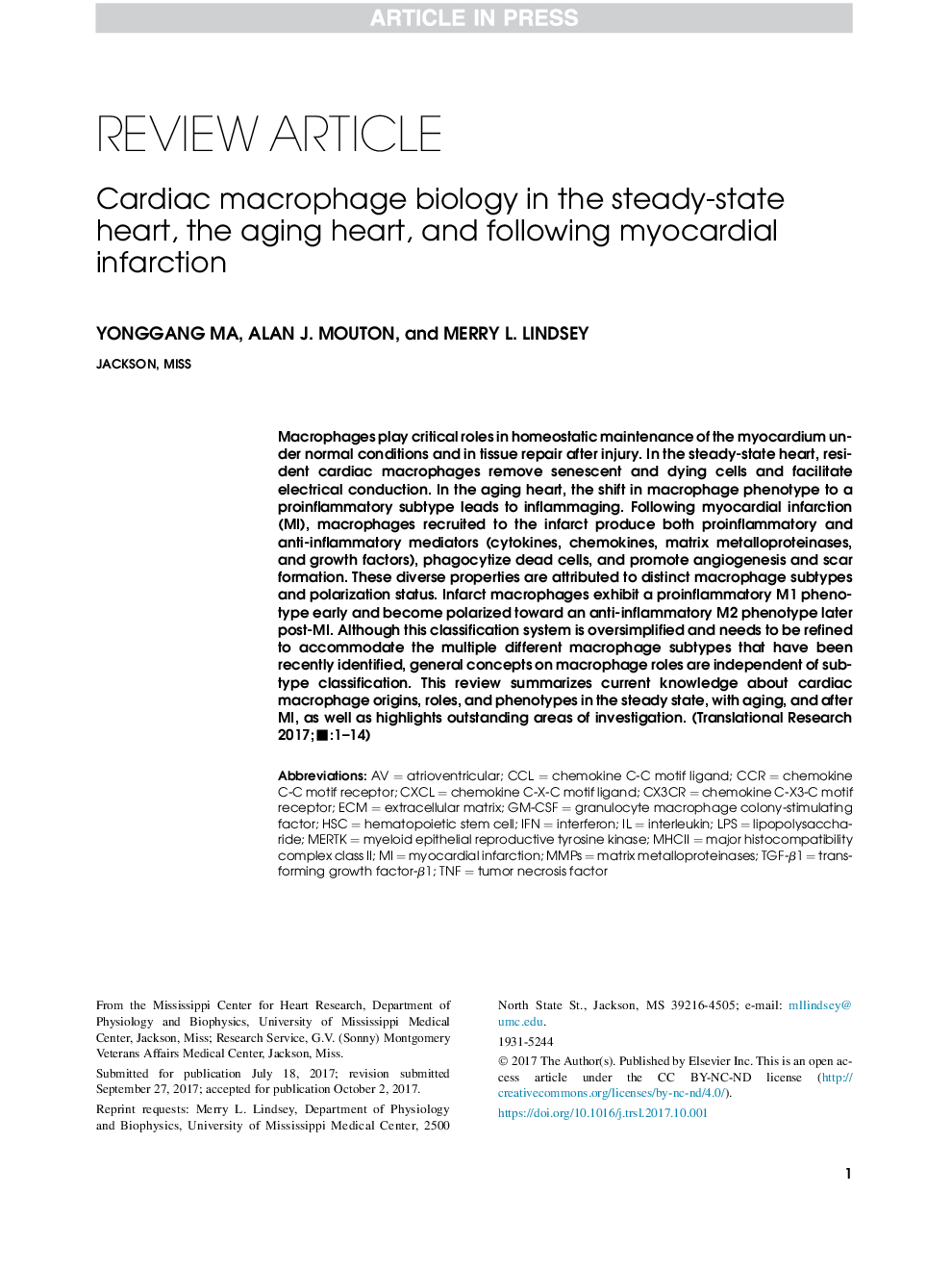| Article ID | Journal | Published Year | Pages | File Type |
|---|---|---|---|---|
| 8769028 | Translational Research | 2018 | 14 Pages |
Abstract
Macrophages play critical roles in homeostatic maintenance of the myocardium under normal conditions and in tissue repair after injury. In the steady-state heart, resident cardiac macrophages remove senescent and dying cells and facilitate electrical conduction. In the aging heart, the shift in macrophage phenotype to a proinflammatory subtype leads to inflammaging. Following myocardial infarction (MI), macrophages recruited to the infarct produce both proinflammatory and anti-inflammatory mediators (cytokines, chemokines, matrix metalloproteinases, and growth factors), phagocytize dead cells, and promote angiogenesis and scar formation. These diverse properties are attributed to distinct macrophage subtypes and polarization status. Infarct macrophages exhibit a proinflammatory M1 phenotype early and become polarized toward an anti-inflammatory M2 phenotype later post-MI. Although this classification system is oversimplified and needs to be refined to accommodate the multiple different macrophage subtypes that have been recently identified, general concepts on macrophage roles are independent of subtype classification. This review summarizes current knowledge about cardiac macrophage origins, roles, and phenotypes in the steady state, with aging, and after MI, as well as highlights outstanding areas of investigation.
Keywords
TNFHSCMHCIILPSTGF-β1CXCLMmpsCCRCCLGM-CSFECMMyocardial infarctioninterferonIFNinterleukinTransforming growth factor-β1AtrioventricularMERTKHematopoietic stem celltumor necrosis factorlipopolysaccharideExtracellular matrixgranulocyte macrophage colony-stimulating factorMatrix metalloproteinasesMajor histocompatibility complex class II
Related Topics
Health Sciences
Medicine and Dentistry
Medicine and Dentistry (General)
Authors
Yonggang Ma, Alan J. Mouton, Merry L. Lindsey,
